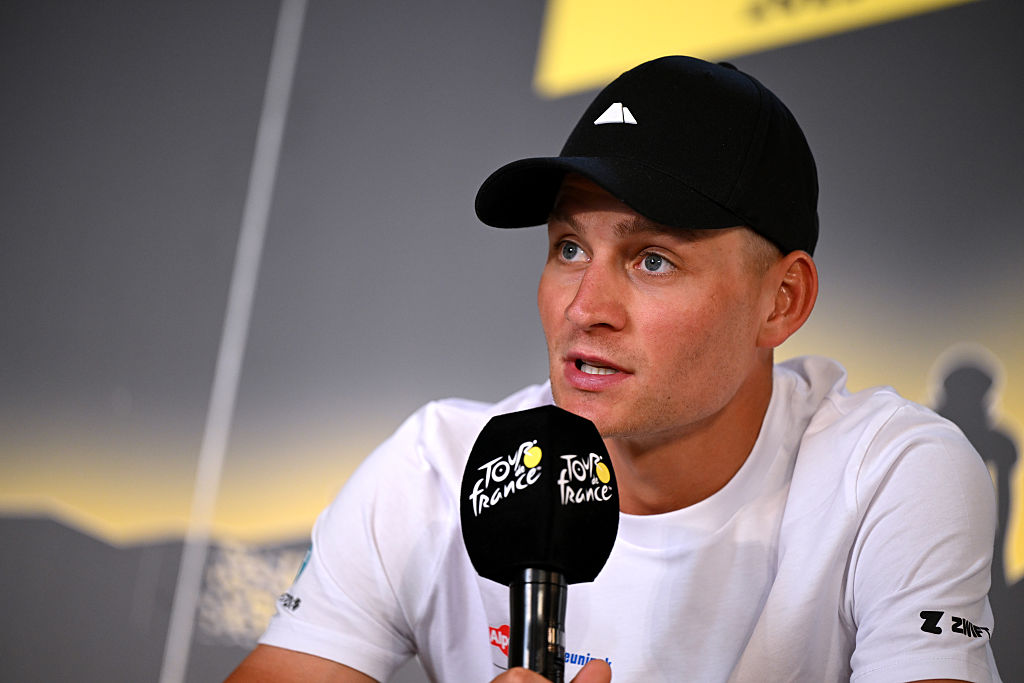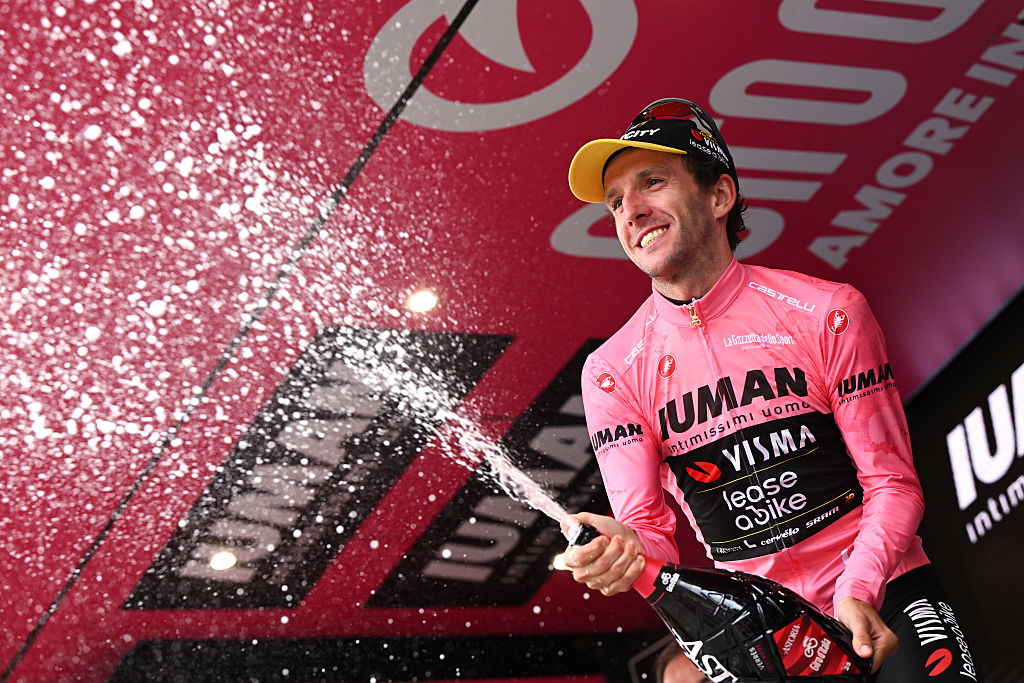'Maybe making the bunch even bigger is a mistake' – Mathieu van der Poel questions safety of increased Tour de France peloton size
Dutchman weighs in on debate with the bunch of all Grand Tours increasing from 22 to 23 teams and from 176 riders to 184

Mathieu van der Poel (Alpecin-Deceuninck) questioned the number of riders in the Tour de France peloton, increasing from 176 to 184 for 2025, with the UCI adding a 23rd team and eight more riders at all three Grand Tours from this season on.
As the ongoing discussion surrounding safety in the peloton rages on, Van der Poel weighed in on the debate surrounding safety at his pre-Tour press conference, singling out the issue of more riders in the bunch as a potential error.
Asked if he feels unsafe in today's peloton, Van der Poel said simply: "This doesn't change a lot, I think it will always be unsafe in the bunch, whether you add something or not.
"Most of the time, it's also the behaviour of riders themselves, which is also normal, because you all fight for the same position and there's not enough space.
"This will be something that will never get out of cycling, but maybe making the bunch even bigger is a mistake, I think less teams, less riders, this will make the biggest difference to be honest."
Is it actually more dangerous to have a bigger peloton?
After an extra wildcard team was allowed specifically for the 2025 season, the permanently-increased peloton size was announced by the UCI back in June, on the recommendation of the Professional Cycling Council (PCC).
Present at the meeting of the PCC was Adam Hansen, president of the Cyclistes Professionnels Associés (CPA), the union which represents the riders, and he shed more light on the decision and how it was viable from a safety point of view, speaking to Cyclingnews after the UCI announcement.
The latest race content, interviews, features, reviews and expert buying guides, direct to your inbox!
Among the reasons were that the peloton wasn't going to be increased to its previous capacity of 198, and that the nature of the extra team being a second division ProTeam changed what an extra eight riders would look like.
"In 2017/18, we reduced it by 22 riders, and now we've increased it by eight riders. So it's not such a dramatic difference," Hansen told Cyclingnews last month.
"The reason why the CPA supported this is mostly because of the ProTour teams. It's a huge benefit when a ProTour team can participate in Grand Tours, obviously, for their sponsors and the sustainability of these teams.
"The way we looked at it is that after the first week, you normally have about five to 10 riders go home due to crashing early on. So, even increasing by eight is not a huge difference. Whereas losing one rider each team was something pretty major, comparing 22 riders out and then only 8 back in."
Hansen also confirmed that he'd spoken to several riders about the potential issues, and that the response, unlike Van der Poel's two days before the Tour, was positive.
"Speaking to riders, some say it's not such a huge problem because the extra team added is a ProTour team, so they're not really at the front fighting, let's say, in the most precise danger moments in the race," Hansen added.
"These are teams that are going in the early breakaways and just getting TV exposure. They have a different role within the sport, so they don't really make such a big difference. From the rider's perspective, it's not such a difference.
"It would be different if you were adding an extra world tour team where they're fighting the front with another full lead-out train, and something like this, but it's not really like that. It's just a Pro Tour team."
Hansen also has the experience of the Giro d'Italia operating with a similarly 184-rider strong peloton in May, to which he received no specific complaints after the fact, with the biggest Giro crashes coming as a result of slippery roads and the difficulty of the gravel stage in Tuscany.
"I never got any bad feedback with the extra size in the Giro at all, and the Giro actually went very smoothly," he said.
"As we saw with the mass crash, this was not because of too big of a peloton as well, but because of the icy, slippery roads, which increased the chance of crashing."
The first 10 stages of the 2025 Tour are expected to be brutal, with the words 'hectic', 'chaotic' and 'nervous' echoing from almost every rider's pre-race interview when asked about how they'll tackle the mix of sprint stages and punchy finishes.
Van der Poel's questioning of a bigger peloton size may not be the last one from the riders, but the answer to whether the UCI, PCC and CPA got their decision correct won't really be revealed until the chaos of the Tour properly unfolds on the road.
The Tour de France is the biggest race in cycling, and a Cyclingnews subscription offers you unlimited access to our unrivalled coverage. Get all the breaking news and analysis from our team on the ground in France, plus the latest pro tech, live race reports, and a daily subscriber-only newsletter with exclusive insight into the action. Find out more.

James Moultrie is a gold-standard NCTJ journalist who joined Cyclingnews as a News Writer in 2023 after originally contributing as a freelancer for eight months, during which time he also wrote for Eurosport, Rouleur and Cycling Weekly. Prior to joining the team he reported on races such as Paris-Roubaix and the Giro d’Italia Donne for Eurosport and has interviewed some of the sport’s top riders in Chloé Dygert, Lizzie Deignan and Wout van Aert. Outside of cycling, he spends the majority of his time watching other sports – rugby, football, cricket, and American Football to name a few.
You must confirm your public display name before commenting
Please logout and then login again, you will then be prompted to enter your display name.
